It was a long process until the second bridge between Pest and Buda was built. It was already evident from the mid-1860s that, after the Chain Bridge, completed in 1849, another crossing was needed between the two cities, and at the end of the decade there were many proposals for a second standing bridge. But at that time, no one really had the money for such a large investment. Moreover, until 1870, only a private enterprise, the Lánchídtársaság, could have built a bridge over the Danube, since it had the privilege to do so in the territory of the two cities (not for a mile, as can be read in many places), but it did not have the money to do so, since it was just sorting out its financial affairs, and the Chain Bridge finally started making a profit.
Neither the state nor the two cities had much money, nor did they have the right to build a bridge. First, money had to be obtained, this was solved by Act X of 1870, from a lottery loan - which was a kind of investment lottery - the state got 24 million forints, which covered the development of Budapest, including the construction of the new bridge. As a first step, they used the money to buy the Lánchíd, and with it the right to build another bridge, and then in 1871 they put out a tender for the new bridge, namely for the area south of Margaret Island.
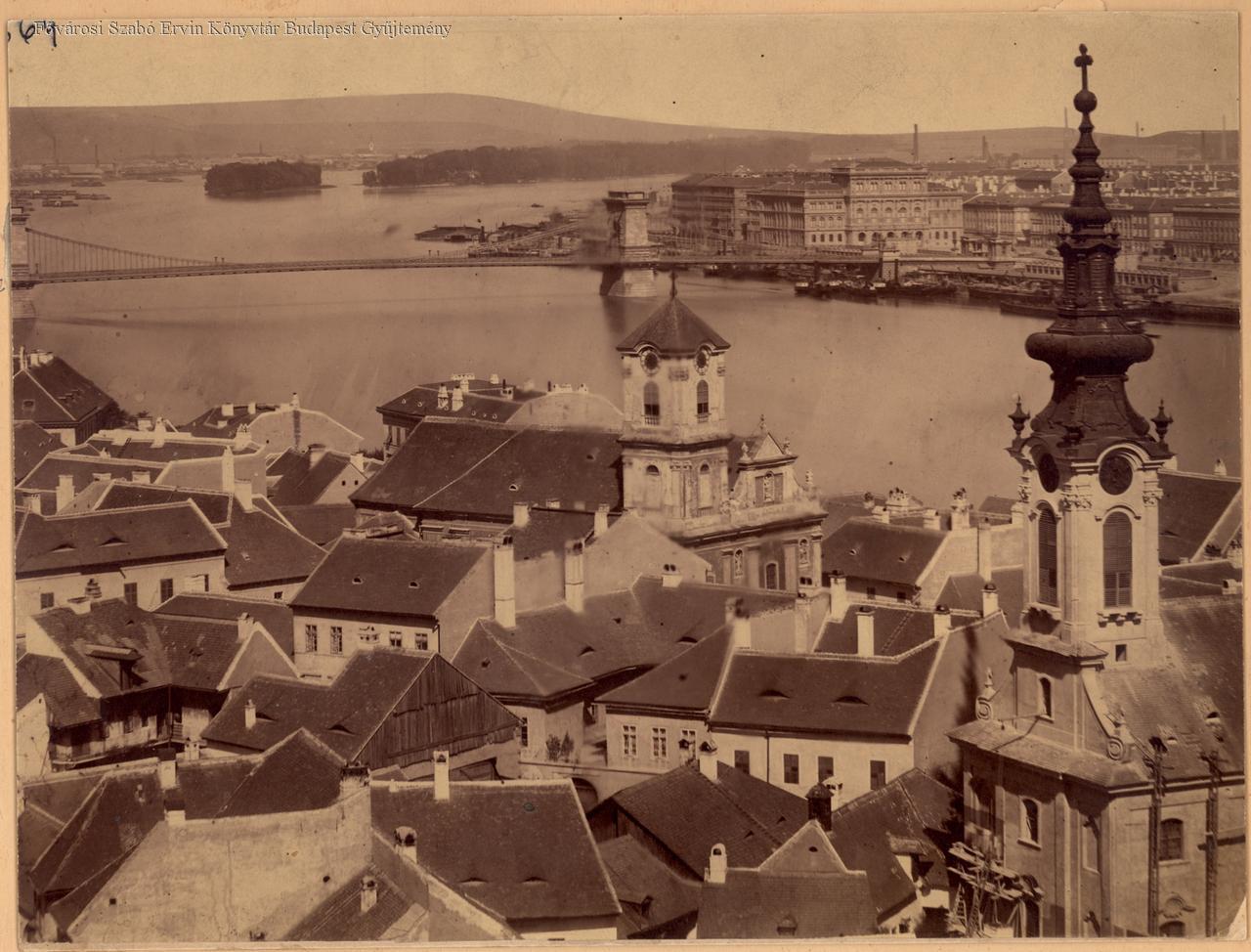
The location of the bridge in 1871. Tabán is in the foreground, Margaret Island is in the background, and Festő Island is visible on the left (Photo: FSZEK Budapest Collection)
This place was considered unsuitable by many, as some politicians and city leaders would have thought it better if a bridge were built in the south, around today's Szabadság bridge. But the government decided that the new crossing should be in the north so that it could connect to the planned elegant ring road and avenue. There were even people like Mór Jókai, who wanted to see two bridges. In a parliamentary debate, which, by the way, was about the tax exemption for investments on the Outer Ring Road, Jókai asked why the bridge is being built where there is actually nothing. Minister of Finance Károly Kerkápoly commented on this:
“Here, in terms of bridge construction, the unfortunate situation is that in the upper part, where Buda is most flared, there is hardly any Pest in the direction of the planned north bridge, and in the lower part, where Pest is flaring, in Mészáros Street, there is no part of Buda. So, wherever we build the bridge, we either cannot find any part of Pest to connect it to Buda or vice versa."
Indeed, there were industrial plants, a horse railway carriage house, and an insane asylum around the bridgehead of the Margaret Bridge in Buda. On the Pest side it was actually the northern border of the city, also mostly with factories. After the bridge was built, geographer János Hunfalvy wrote about it in his work A Duna szabályozása [The Regulation of the Danube] in 1877:
" The Margaret Bridge, where it stands, actually serves no purpose. Originally, it was a strange idea to plan and build such an expensive bridge for the sake of the island."
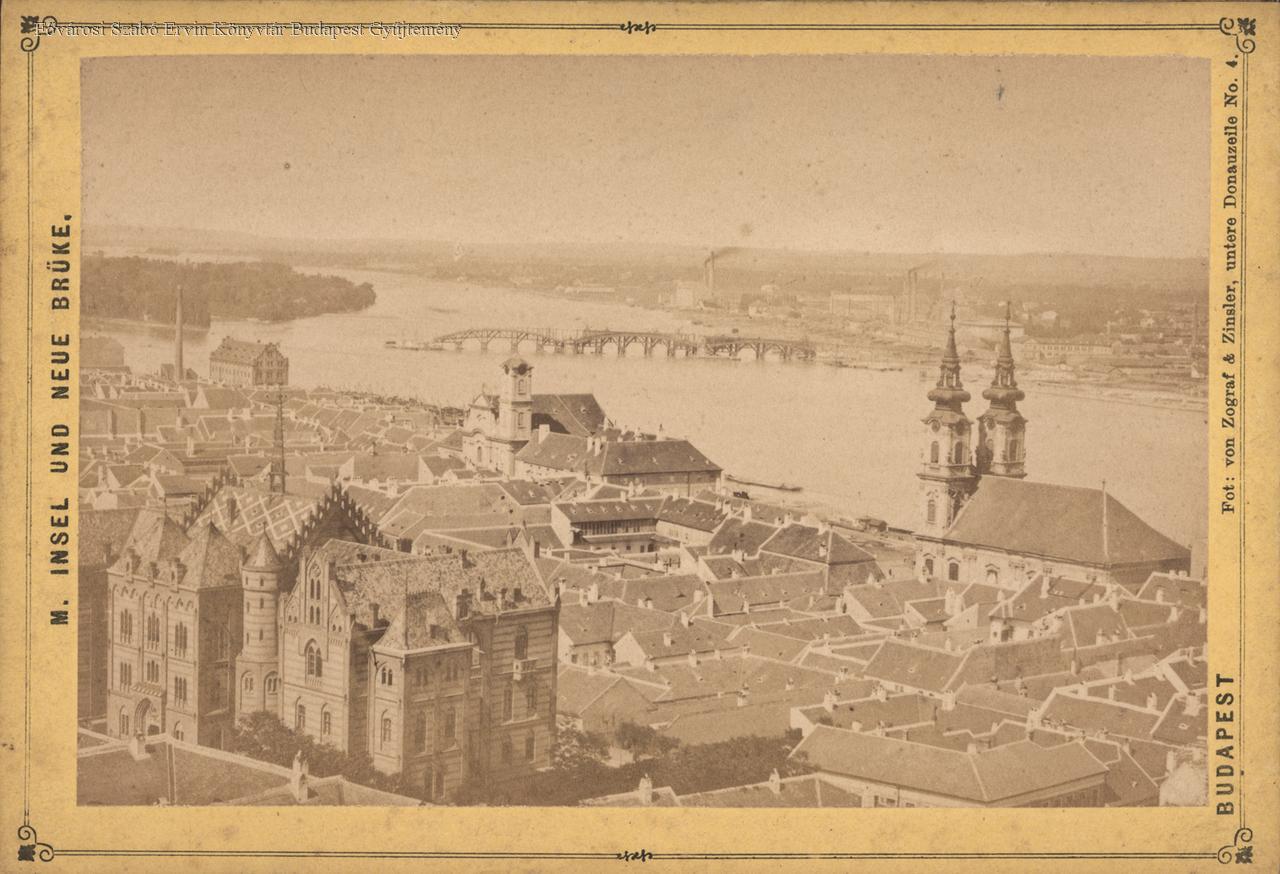
In the background are the Margaret Bridge and Margaret Island under construction, in the foreground the Budai Főrealiskola in today's Toldy Ferenc Street (Photo: FSZEK Budapest Collection)
However, the government was definitely thinking about a northern road bridge, for which a tender was issued in May 1871, for which a total of 43 entries were received. Works were received from all over the world, the winner was the Frenchman Ernest Gouen, who not only prepared the plans, but also undertook the construction of the bridge. Gouin had a big advantage in that he was extremely flexible when it came to ordering. Although the tender was about a slightly different bridge, because at that time it was thought that one branch of the Danube next to Margaret Island would be narrower, the other wider.
Due to the change in ideas, do we need a structure with 6 openings instead of 5? No worries. Does the esteemed client not know how wide a bridge he wants three months before the start of construction? No worries. The latter was questionable because even in April 1872, the government debated whether the bridge should be 48 or 53 feet wide. It is possible to run a horse railway on the wider bridge, and the government wanted to collect the cost of the wider bridge from the horse railway companies (in the end with success).
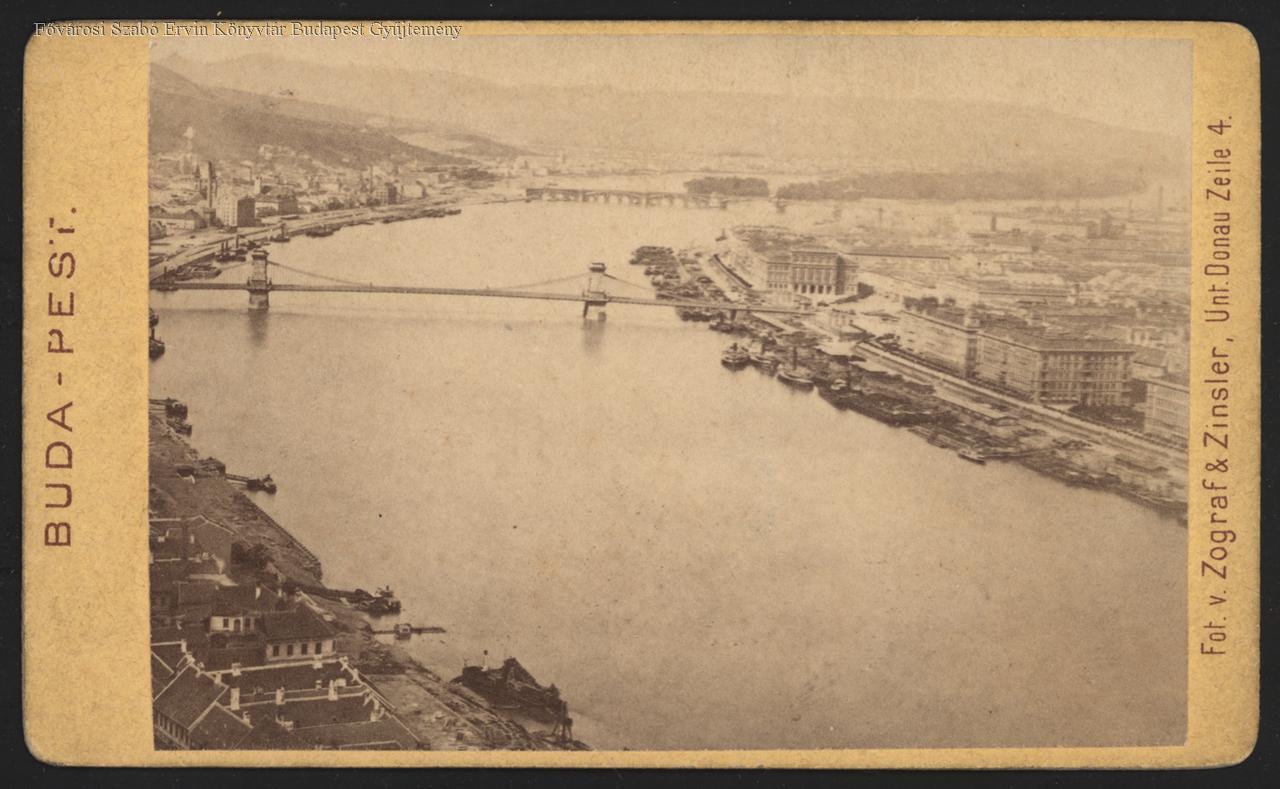
In the photo, the arches of the Buda side are already being assembled (Photo: FSZEK Budapest Collection)
The final plans were ready by the summer of 1872, and were for a six-span, 53-foot-wide arch bridge, with the centre pier designed to allow a third wing to lead out to Margaret Island.
Construction began at the beginning of August 1872, and according to the original contract, which was signed only in November 1872, the bridge had to be opened to traffic on 31 December 1874, so that the deadline for the final completion of the bridge was 31 July 1875.
The works started at the beginning of August with piling, which was actually just preliminary work. At the Chain Bridge, driving down the piles was a long and arduous job, but at the Margaret bridge, the foundation was laid using a different method, lowering boxes made of iron - they were huge, 7 mm thick, one meter high iron rings that were riveted to each other - were lowered, and the workers were not in an open pit surrounded with dams while they dug the foundation, but they worked in a pressurized chamber, which is a much faster method. Traces of the riveted iron rings used for the pillars can still be seen at low water levels at the middle pillar.
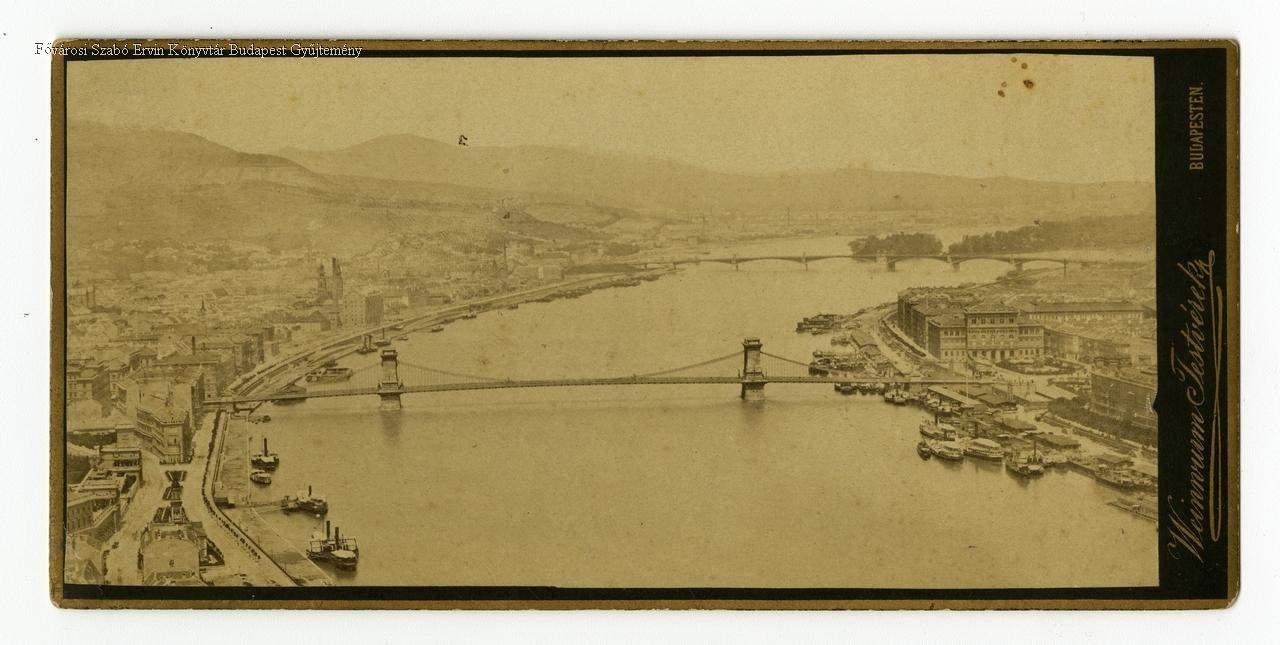
The completed bridge (Photo: FSZEK Budapest Collection)
The five pillars and the bridgeheads were thus quickly completed, and in parallel, the pieces of the huge arches were made at Gouin's company, Societé de Construction de Batignoles. However, the deadline was not met, but it was not the fault of the company, as the construction was also hampered by the flooding of the Danube in 1876. We mentioned in the article that the state covered the bridge with a loan of 24 million. Margit Bridge alone cost 5 million (exactly 5,051,000 forints), i.e. it was cheaper than the purchase of the Chain Bridge, because for that, 6,733,040 forints were paid in 1870.
Cover photo: The completed bridge in the photo of György Klösz (Photo: FSZEK Budapest Collection)

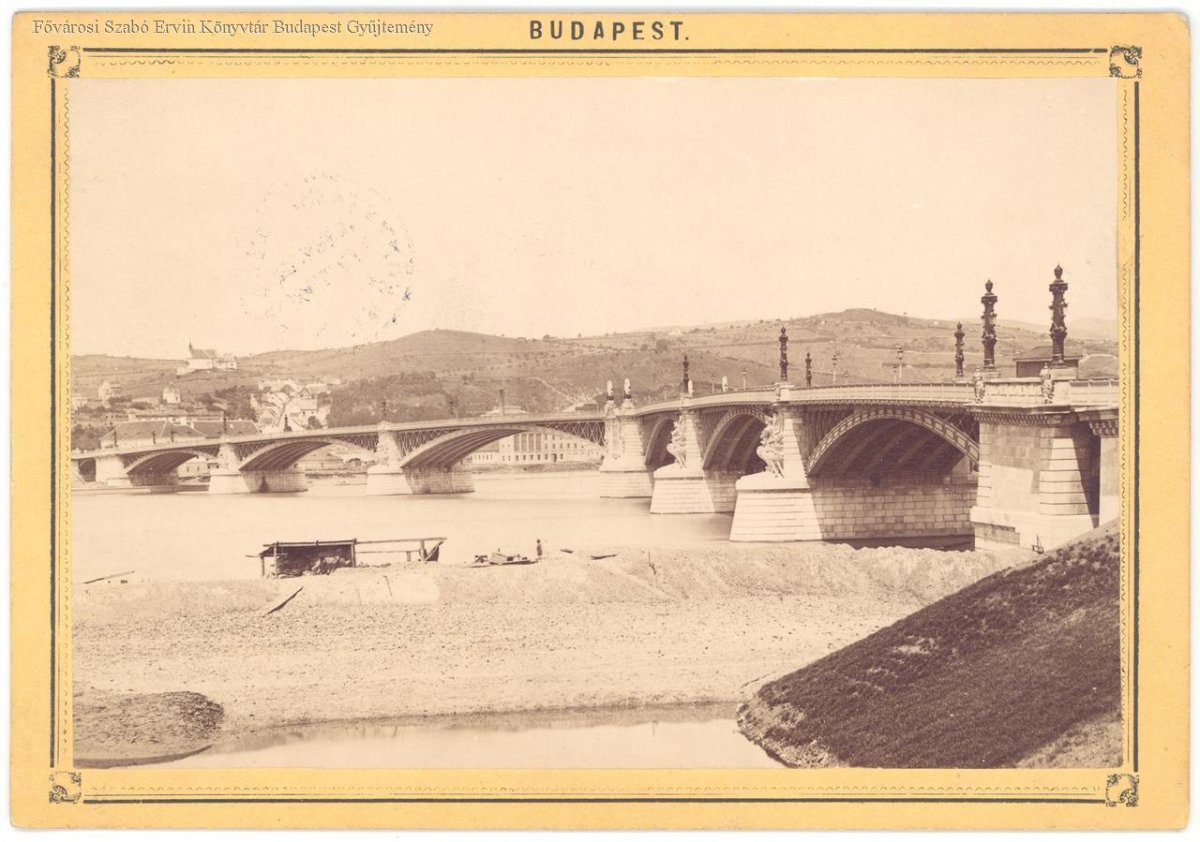

































Hozzászólások
Log in or register to comment!
Login Registration